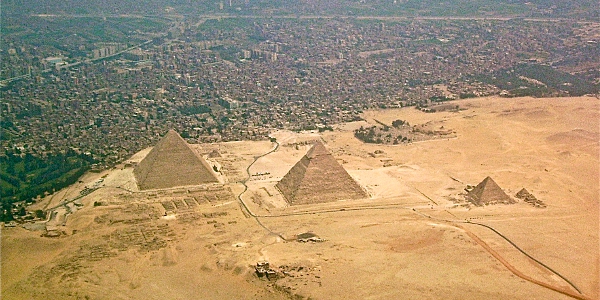Egypt hopes to lure back wary tourists with 3D-scanned pyramids
Since Napoleon’s expedition to Egypt (1798-1801), Western interest in the country – and especially its ancient history – has never waned. Recent evidence includes the exhibition Osiris: Egypt’s Sunken mysteries, which has already attracted more than 200,000 visitors to the Institut du Monde Arabe in Paris. The British Museum’s fresh presentation of eight of the mummies in its collection – Ancient Lives, New Discoveries – attracted similar numbers throughout 2014 and 2015. Meanwhile, the Met Museum in New York has just wrapped up the first major exhibition to cover the Middle Kingdom period extensively.
In Egypt, it’s an entirely different story. Despite its exceptional cultural heritage, the country has been having a hard time attracting visitors since the 2011 revolution that brought down the former president Hosni Mubarak. Much of the blame can be placed on a series of terrorist attacks, including the October 31 bombing of a Russian airliner. Foreign ministries of a number of major Western countries now discourage their citizens from visiting parts of Egypt.
Sensational projects
In an attempt to revive Egypt’s crucial tourism industry, its government has launched a series of sensational projects. The minister of antiquities, Mamdouh Eldamaty, is omnipresent in the media, and often appears at projects accompanied by domestic and international Egyptologists. The most highly publicised event was the radar study of King Tutankhamun’s tomb in the Valley of the Kings. The analyses prompted the minister to say they were “90% sure” that there were hidden chambers, reviving fantasies around the tomb of the young king that was discovered in 1922 by Howard Carter.
This passion for Egypt, sometimes close to mysticism, is illustrated by the excitement generated by the ScanPyramids project. Through high-definition scans of several pyramids (Khufu and Khafre on the Giza Plateau, and the Bent Pyramid in the Dahshur burial complex), the hope is to discover possibly unknown rooms, or to understand – finally – how these stone giants were built.
Other large-scale projects are also underway, designed to allow Egypt to show off its archaeological riches. In Cairo, two ultramodern museums are scheduled to open their doors in the near future: the long-delayed Grand Egyptian Museum and the National Museum of Egyptian Civilisation (NMEC). Together, the two will offer 150,000m2 of space, housing nearly 200,000 objects under optimal storage conditions, and feature conference rooms, theatres, and more.
The government also announced recently that it will revive the construction of the Alexandria Underwater Museum. Once built, the museum will allow visitors to see the submerged ruins of the city’s Quait Bey Citadel and its ancient lighthouse, the Pharos.
A growing interest from Egyptians
Like other countries during the Arab Spring, Egypt’s cultural heritage suffered in the chaotic wake of the 2011 revolution. During this time, more than 1,000 items were stolen from the Mallawi Museum and illegal excavations also took place. But these incidents remained limited and the majority of Egyptians were aware of the need to protect and enhance the country’s archaeological heritage.
One of the most striking examples was everyday Egyptians forming a human chain around the Cairo Museum to protect it from looters in 2011. More recently, a growing number of books on Egypt’s ancient history are being published in Arabic to encourage citizens to take an interest in and reclaim their rich history.
An Egyptian friend recently told me that one indication that his countrymen were becoming more interested in their ancient heritage was almost daily media appearances of the minister of antiquities and other major local personalities in the field of Egyptology, such as Khaled el-Enany, director of the Cairo Museum and the NMEC.
The projects currently being developed, and their impact on the daily lives of Egyptians, are being closely watched, raising both hope and suspicion. The country’s worrying economic situation, the rise of religious fundamentalism, and political rifts all create an anxious atmosphere that Egyptians hope will have begun to subside once these prestigious projects are completed – even amid a certain mistrust about their eye-popping costs during a difficult economic period.
Simon Thuault has a contract as a doctoral researcher at the Université Paul-Valéry Montpellier. This article was originally published (in French) on The Conversation.


